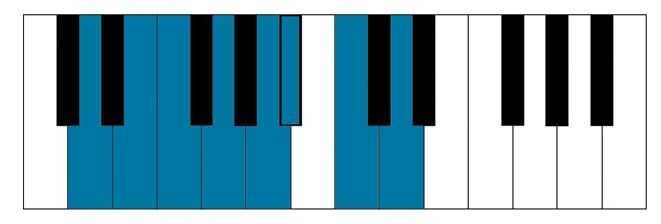

There are two main clefs with which to familiarize yourself the first is a treble clef. Sheet music notes, represented by lines and spaces, are named A-G, and the note sequence moves alphabetically up the staff. Each of those lines and each of those spaces represents a different letter, which in turn represents a note. The staff consists of five lines and four spaces. All music contains these fundamental components, and to learn how to read music, you must first familiarize yourself with these basics. Music is made up of a variety of symbols, the most basic of which are the staff, the clefs, and the notes. How to Read Music Step 1: Learn the Basic Symbols of Musical Notation Keep reading to the end for some free tools and sheet music arrangements to help you learn. Learning how to read music really does open up a whole new world to explore!įollow our step-by-step introduction to reading music and, with a little practice, you’ll be playing along in no time.

Think of the notes as the letters, the measures as the words, the phrases as the sentences, and so on. They represent the pitch, speed, and rhythm of the song they convey, as well as expression and techniques used by a musician to play the piece. The symbols you see on pages of sheet music have been used for hundreds of years. We’ll look at diminished chords later.Have you ever heard a song on the radio and thought, “Hey, it’d be really cool to know how to play that, I wonder what the music notes are?” Do you have friends who play musical instruments, and you want to join in on the fun? Do you want to expand your general artistic knowledge? Well, learning the basics of how to read sheet music can help you achieve all of these, and in a shorter amount of time than you might think!Īt its very simplest, music is a language just like you’d read aloud from a book. * The 7-chord functions a little differently from the other six. Īdding a note a 3rd above each triad produces the following “seventh” chords: Break them up and play them over the track. The triads built on the 7 different notes of the scale are landmarks in the Key of Db. Hear and feel more clearly the difference between major 3rds and minor 3rds by playing chromatically between each 3rd. Some are MINOR (m) 3rds - 3 half-steps apart.

These thirds look the same, but they don’t sound the same! Some are MAJOR (M) 3rds - 4 half-steps apart. Make sure you hold each half-note for two whole beats. In exercise Db5, play the broken thirds of the G scale. The distance from bottom note to top note of each triad is a 5th. You can see that the diatonic triads we played in the “intervals” section each consist of two 3rds, one on top of the other. On the staff, 3rds and 5ths always look like the examples shown here.

Getting familiar with chords in the Key of Db


 0 kommentar(er)
0 kommentar(er)
